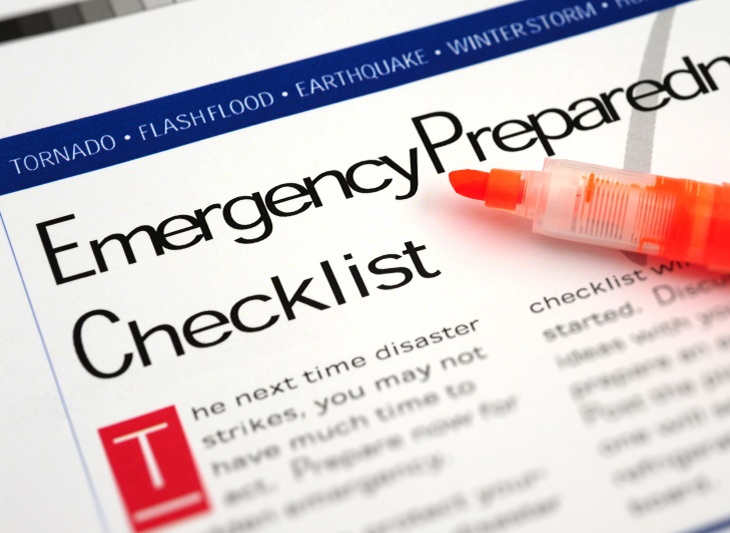APEC Backs Incentives for Business Disaster Planning

Disaster management officials from APEC member economies have voiced support for the introduction of financial incentives to spur emergency preparedness among businesses in the Asia-Pacific as the risk of shocks to trade and growth rises in the world’s most natural disaster hit region.
An incentives-based approach was backed by officials over mandatory measures during a public-private sector meeting in Bangkok to promote business continuity planning. Focus is on lifting the low adoption rate by small and medium enterprises which account for more than 97 per cent of businesses, 60 per cent of GDP and over half of employment in APEC economies, and are an emerging yet vulnerable driver of cross-border production and supply chains.
“Small businesses play a significant and growing role in the international production and trade of goods, particularly as suppliers of component parts and equipment for larger manufacturers, but their disaster risk exposure remains disproportionately high,” explained Dr Li Wei-sen, Co-Chair of the APEC Emergency Preparedness Working Group, which oversees member cooperation on related issues.
“The knock-on effects of small business disruptions or shutdowns can be substantial given the increasingly globalized nature of production and trade, as earthquakes, floods and other natural disasters in the Asia-Pacific have shown,” he noted. “The adoption of business continuity plans by small and medium enterprises is critical to mitigating the disaster threat within the sector and to the global economy but their recognition of this need and action to address it is often lacking.”
APEC economies are hit by more 70 per cent of the world’s natural disasters and suffered USD68 billion annually in related costs from 2003 to 2013. But just 13 per cent of small and medium enterprises in the region have business continuity plans in place which involve raising disaster risk awareness, identifying vulnerabilities and organizing teams to address them. This gap leaves the sector more susceptible to business disruptions, financial losses and bankruptcy.
“Possible financial incentives to encourage small and medium enterprises to adopt business continuity plans include tax cuts, reduced insurance costs and lower interest rates to help them overcome the initial investment of setting up their plans,” said Natori Kiyoshi, who is also Co-Chair of the APEC Emergency Preparedness Working Group. “There is no one-size-fits-all approach given variations in economic and financial conditions among the region’s economies.”
“Making business continuity planning use compulsory for small and medium enterprises would be counterproductive because many governments lack the resources to promote and enforce adoption,” he added. “Further down the road, governments could develop standards for business continuity plans and eventually regulations may be appropriate.”
The meeting preceded a two-day workshop to help officials understand the benefits of business continuity plans and improve the capacity of governments to promote them, one of a series initiated by Australia.
It builds on an ambitious multi-year business continuity planning training program for small and medium enterprises currently being implemented in APEC economies—originated following the Great East Japan Earthquake and Tsunami and massive flooding in Thailand six months later which devastated automobile and electronics production due to shortages of vital parts and materials from crippled suppliers and resulted in tens of billions of dollars in losses.
“Governments at all levels continue to face policy and technical obstacles when promoting greater use of business continuity plans by small and medium enterprises,” concluded Leslie Williams, Director of Reform, Security and Economic and Technical Cooperation, APEC Branch for Australia’s Department of Foreign Affairs and Trade. “We are working to identify these barriers and equip officials with the necessary tools and strategies to overcome them.”
Senior Disaster Management Officials and Small and Medium Enterprise Ministers from APEC member economies will meet on 22-23 September and 25 September, respectively, in Iloilo, the Philippines to gauge the progress of these measures and take further policy steps to strengthen disaster resilience within the sector.
# # #
For more:
Insight on deepening APEC member cooperation to boost women-led enterprises as a driver of disaster reconstruction and risk reduction can be found here.
New APEC member initiatives to lower Asia-Pacific trade barriers for small businesses are described at this link.
New APEC measures to promote small business participation in trade to combat Ebola, MERS and other unfolding health concerns are detailed here.
For further details, or to arrange possible media interviews with APEC officials, please contact:
David Hendrickson +65 9137 3886 at [email protected]
Michael Chapnick +65 9647 4847 at [email protected]
More on APEC meetings, events, projects and publications can be found on www.apec.org. You can also follow APEC on Twitter and join us on Facebook and LinkedIn.

